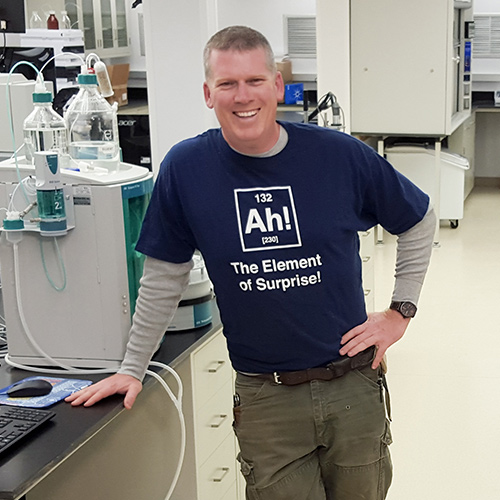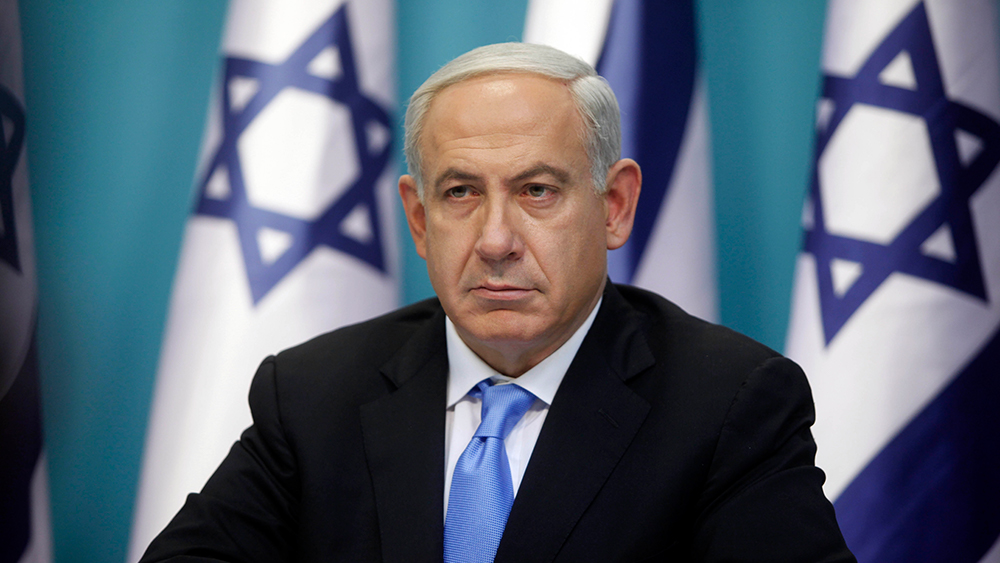
Read this article from GM Watch and learn just how devious and criminal Monsanto has become. It is truly the most evil corporation on the planet, and it bankrolls evil, corrupt people like Bruce Chassy, Jon Entine and A. Wallace Hayes. Every effort to retract science papers that exposed the toxicity of GMOs and glyphosate, we now know, was orchestrated by Monsanto through a network of bribery and fraud that even ensnared the editors of science journals. No corporation has corrupted science more than Monsanto, and it is very telling that science propagandists like Neil deGrasse Tyson and Bill Nye have joined the efforts of Monsanto to lie to the world and suppress scientific truth in order to protect the profits of the world's most evil (and dangerous) corporation.
Here's the full story from GM Watch. Also see this page of court discovery documents, listed on USRTK.org.
Uncovered: Monsanto campaign to get Séralini study retracted
Documents released in US cancer litigation show Monsanto’s desperate attempts to suppress a study that showed adverse effects of Roundup herbicide – and that the editor of the journal that retracted the study had a contractual relationship with the company. Claire Robinson reports
Internal Monsanto documents released by attorneys leading US cancer litigation show that the company launched a concerted campaign to force the retraction of a study that revealed toxic effects of Roundup. The documents also show that the editor of the journal that first published the study entered into a contract with Monsanto in the period shortly before the retraction campaign began.
The study, led by Prof GE Séralini, showed that very low doses of Monsanto’s Roundup herbicide had toxic effects on rats over a long-term period, including serious liver and kidney damage. Additional observations of increased tumour rates in treated rats would need to be confirmed in a larger-scale carcinogenicity study.
The newly released documents show that throughout the retraction campaign, Monsanto tried to cover its tracks to hide its involvement. Instead Monsanto scientist David Saltmiras admitted to orchestrating a “third party expert” campaign in which scientists who were apparently independent of Monsanto would bombard the editor-in-chief of the journal Food and Chemical Toxicology (FCT), A. Wallace Hayes, with letters demanding that he retract the study.
Use of “third party experts” is a classic public relations tactic perfected by the tobacco industry. It consists of putting industry-friendly messages into the mouths of supposedly “independent” experts, since no one would believe industry attempts to defend its own products. Back in 2012, GMWatch founder Jonathan Matthews exposed the industry links of the supposedly independent scientists who lobbied the journal editor to retract the Séralini paper. Now we have first-hand proof of Monsanto’s direct involvement.
In one document, Saltmiras reviews his own achievements within the company, boasting that he “Successfully facilitated numerous third party expert letters to the editor which were subsequently published, reflecting the numerous significant deficiencies, poor study design, biased reporting and selective statistics employed by Séralini. In addition, coauthored the Monsanto letter to the editor with [Monsanto employees] Dan Goldstein and Bruce Hammond.”
Saltmiras further writes of how “Throughout the late 2012 Séralini rat cancer publication and media campaign, I leveraged my relationship [with] the Editor i[n] Chief of the publishing journal… and was the single point of contact between Monsanto and the Journal.”
Another Monsanto employee, Eric Sachs, writes in an email about his efforts to galvanize scientists in the letter-writing campaign. Sachs refers to Bruce Chassy, a scientist who runs the pro-GMO Academics Review website. Sachs writes: “I talked to Bruce Chassy and he will send his letter to Wally Hayes directly and notify other scientists that have sent letters to do the same. He understands the urgency… I remain adamant that Monsanto must not be put in the position of providing the critical analysis that leads the editors to retract the paper.”
In response to Monsanto’s request, Chassy urged Hayes to retract the Séralini paper: “My intent was to urge you to roll back the clock, retract the paper, and restart the review process.”
Chassy was also the first signatory of a petition demanding the retraction of the Séralini study and the co-author of a Forbes article accusing Séralini of fraud. In neither document does Chassy declare any link with Monsanto. But in 2016 he was exposed as having taken over $57,000 over less than two years from Monsanto to travel, write and speak about GMOs.
Sachs is keen to ensure that Monsanto is not publicly seen as attempting to get the paper retracted, even though that is precisely what it is doing. Sachs writes to Monsanto scientist William Heydens: “There is a difference between defending science and participating in a formal process to retract a publication that challenges the safety of our products. We should not provide ammunition for Séralini, GM critics and the media to charge that Monsanto used its might to get this paper retracted. The information that we provided clearly establishes the deficiencies in the study as reported and makes a strong case that the paper should not have passed peer review.”
Another example of Monsanto trying to cover up its involvement in the retraction campaign emerges from email correspondence between Monsanto employees Daniel Goldstein and Eric Sachs. Goldstein states: “I was uncomfortable even letting shareholders know we are aware of this LTE [GMW: probably “Letter to the Editor”]…. It implies we had something to do with it – otherwise how do we have knowledge of it? I could add ‘Aware of multiple letters to editor including one signed by 25 scientists from 14 countries’ if you both think this is OK.” Sachs responds: “We are ‘connected’ but did not write the letter or encourage anyone to sign it.”
A. Wallace Hayes was paid by Monsanto
The most shocking revelation of the disclosed documents is that the editor of Food and Chemical Toxicology, A. Wallace Hayes, entered into a consulting agreement with Monsanto in the period just before Hayes’s involvement in the retraction of the Séralini study. Clearly Hayes had a conflict of interest between his role as a consultant for Monsanto and his role as editor for a journal that retracted a study determining that glyphosate has toxic effects. The study was published on 19 September 2012; the consulting agreement between Hayes and Monsanto was dated 21 August 2012 and Hayes is contracted to provide his services beginning 7 September 2012.
The documents also reveal that Monsanto paid Hayes $400 per hour for his services and that in return Hayes was expected to “Assist in establishment of an expert network of toxicologists, epidemiologists, and other scientists in South America and participate on the initial meeting held within the region. Preparation and delivery of a seminar addressing relevant regional issues pertaining to glyphosate toxicology is a key deliverable for the inaugural meeting in 2013.”
Hayes should have recused himself from any involvement with the Séralini study from the time he signed this agreement. But he kept quiet. He went on to oversee a second “review” of the study by unnamed persons whose conflicts of interest, if any, were not declared – resulting in his decision to retract the study for the unprecedented reason that some of the results were “inconclusive”.
Hayes told the New York Times’s Danny Hakim in an interview that he had not been under contract with Monsanto at the time of the retraction and was paid only after he left the journal. He added that “Monsanto played no role whatsoever in the decision that was made to retract.” But since it took the journal over a year to retract the study after the months-long second review, which Hayes oversaw, it’s clear that he had an undisclosed conflict of interest from the time he entered into the contract with Monsanto and during the review process. He appears to be misleading the New York Times.
The timing of the contract also begs the question as to whether Monsanto knew the publication of the study was coming. If so, they may have been happy to initiate such a relationship with Hayes at just that time.
A Monsanto internal email confirms the company’s intimate relationship with Hayes. Saltmiras writes about the recently published Séralini study: “Wally Hayes, now FCT Editor in Chief for Vision and Strategy, sent me a courtesy email early this morning. Hopefully the two of us will have a follow up discussion soon to touch on whether FCT Vision and Strategy were front and center for this one passing through the peer review process.”
In other email correspondence between various Monsanto personnel, Daniel Goldstein writes the following with respect to the Séralini study: “Retraction – Both Dan Jenkins (US Government affairs) and Harvey Glick made a strong case for withdrawal of the paper if at all possible, both on the same basis – that publication will elevate the status of the paper, bring other papers in the journal into question, and allow Séralini much more freedom to operate. All of us are aware that the ultimate decision is up to the editor and the journal management, and that we may not have an opportunity for withdrawal in any event, but I felt it was worth reinforcing this request.”
Monsanto got its way, though the paper was subsequently republished by another journal with higher principles – and, presumably, with an editorial board that wasn’t under contract with Monsanto.
Why Monsanto had to kill the Séralini study
It’s obvious that it was in Monsanto’s interests to kill the Séralini study. The immediate reason was that it reported harmful effects from low doses of Roundup and a GM maize engineered to tolerate it. But the wider reason that emerges from the documents is that to admit that the study had any validity whatsoever would be to open the doors for regulators and others to demand other long-term studies on GM crops and their associated pesticides.
A related danger for Monsanto, pointed out by Goldstein, is that “a third party may procure funding to verify Séralini’s claims, either through a government agency or the anti-GMO/antl-pesticide financiers”.
The documents show that Monsanto held a number of international teleconferences to discuss how to pre-empt such hugely threatening developments.
Summing up the points from the teleconferences, Daniel Goldstein writes that “unfortunately”, three “potential issues regarding long term studies have now come up and will need some consideration and probably a white paper of some type (either internal or external)”. These are potential demands for
• 2 year rat/long-term cancer (and possibly reproductive toxicity) on GM crops
• 2 year/chronic studies on pesticide formulations, in addition to the studies on the active ingredient alone that are currently demanded by regulators, and
• 2 year rat/chronic studies of pesticide formulations on the GM crop.
In reply to the first point, Goldstein writes that the Séralini study “found nothing other than the usual variation in SD [Sprague-Dawley] rats, and as such there is no reason to question the recent EFSA guidance that such studies were not needed for substantially equivalent crops”. GMWatch readers will not be surprised to see Monsanto gaining support from EFSA in its opposition to carrying out long-term studies on GMOs.
In answer to the second point, Goldstein reiterates that the Séralini study “actually finds nothing – so there is no need to draw any conclusions from it – but the theoretical issue has been placed on the table. We need to be prepared with a well considered response.”
In answer to the third point, Goldstein ignores the radical nature of genetic engineering and argues pragmatically, if not scientifically, “This approach would suggest that the same issue arises for conventional crops and that every individual formulation would need a chronic study over every crop (at a minimum) and probably every variety of crop (since we know they have more genetic variation than GM vs conventional congener) and raises the possibility of an almost limitless number of tests.” But he adds, “We also need a coherent argument for this issue.”
EU regulators side with Monsanto
To the public’s detriment, some regulatory bodies have backed Monsanto rather than the public interest and have backed off the notion that long-term studies should be required for GM crops. In fact, the EU is considering doing away with even the short 90-day animal feeding studies currently required under European GMO legislation. This will be based in part on the results of the EU-funded GRACE animal feeding project, which has come under fire for the industry links of some of the scientists involved and for its alleged manipulation of findings of adverse effects on rats fed Monsanto’s GM MON810 maize.
Apology required
A. Wallace Hayes is no longer the editor-in-chief of FCT but is named as an “emeritus editor”. Likewise, Richard E. Goodman, a former Monsanto employee who was parachuted onto the journal’s editorial board shortly after the publication of the Séralini study, is no longer at the journal.
But although they are sidelined or gone, their legacy lives on in the form of a gap in the history of the journal where Séralini’s paper belongs.
Now that Monsanto’s involvement in the retraction of the Séralini paper is out in the open, FCT and Hayes should do the decent thing and issue a formal apology to Prof Séralini and his team. FCT cannot and should not reinstate the paper, because it is now published by another journal. But it needs to draw a line under this shameful episode, admit that it handled it badly, and declare its support for scientific independence and objectivity.
Read the full entry at GMwatch.org

Mike Adams (aka the "Health Ranger") is the founding editor of NaturalNews.com, a best selling author (#1 best selling science book on Amazon.com called "Food Forensics"), an environmental scientist, a patent holder for a cesium radioactive isotope elimination invention, a multiple award winner for outstanding journalism, a science news publisher and influential commentator on topics ranging from science and medicine to culture and politics.
Mike Adams also serves as the lab science director of an internationally accredited (ISO 17025) analytical laboratory known as CWC Labs. There, he was awarded a Certificate of Excellence for achieving extremely high accuracy in the analysis of toxic elements in unknown water samples using ICP-MS instrumentation.
In his laboratory research, Adams has made numerous food safety breakthroughs such as revealing rice protein products imported from Asia to be contaminated with toxic heavy metals like lead, cadmium and tungsten. Adams was the first food science researcher to document high levels of tungsten in superfoods. He also discovered over 11 ppm lead in imported mangosteen powder, and led an industry-wide voluntary agreement to limit heavy metals in rice protein products.
Adams has also helped defend the rights of home gardeners and protect the medical freedom rights of parents. Adams is widely recognized to have made a remarkable global impact on issues like GMOs, vaccines, nutrition therapies, human consciousness.
Please contact us for more information.























